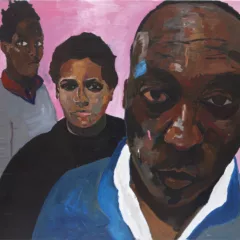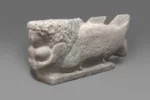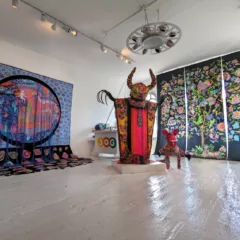Melvin Edwards: Five Decades, organized by the Nasher Sculpture Center, Dallas (at the Zimmerli Art Museum at Rutgers University, New Brunswick through Jan. 3, 2016 and the Columbus Museum of Art, Columbus, Ohio Feb. 12 – May 8, 2016) should trouble the canonical history of American art of the past 50 years. Since 1965, when Donald Judd declared in “Specific Objects” that the best new art was neither painting nor sculpture, the term “sculpture” has been suspect. Since then, artists working in three dimensions have made “objects,” “installations,” “floor pieces,” “assemblages”—anything but sculpture. Yet in 1963, Mel Edward began a major series, Lynch Fragments, that he has continued to the present; this central body of work, and his most well-known, is clearly within a tradition of welded sculpture incorporating found objects that includes Picasso, Richard Stankiewicz, Jean Tingley, John Chamberlain, and Mark de Suvero. Mel Edwards has extended the forms of this tradition and given it significant value through his choice of materials.
Face-to-face with sociopolitical inequality
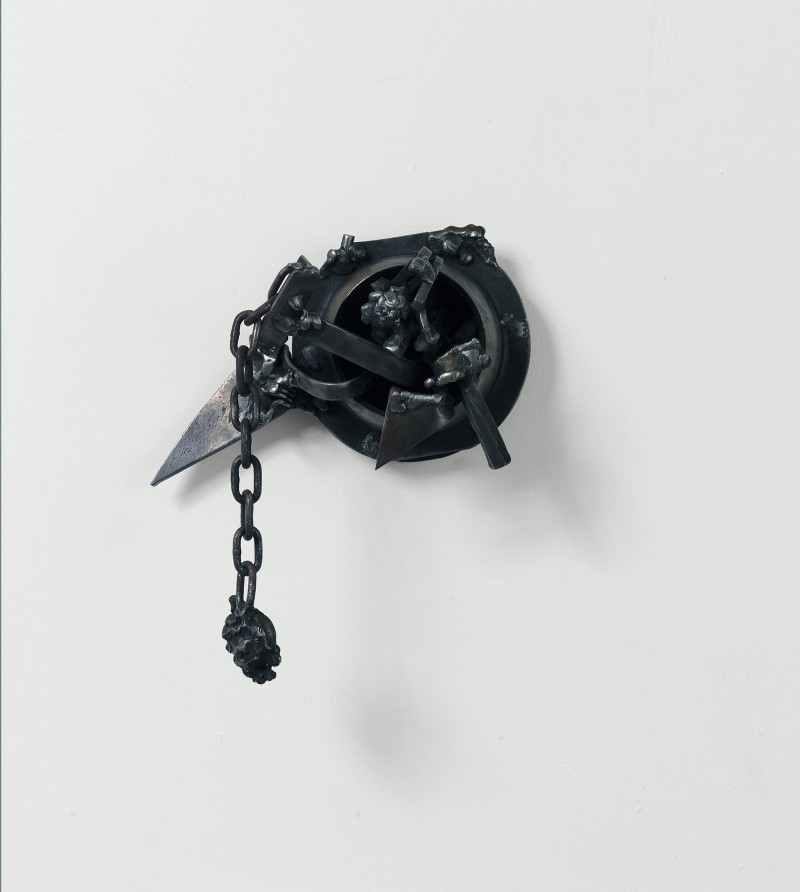
The title of the series, Lynch Fragments, acknowledges the history of African-Americans: subject to more than two centuries of violence, continuing exclusion, and abuse at the hands of law enforcement which has only recently become newsworthy. The individually titled works in the series neither illustrate nor refer to lynching; rather, they acknowledge the sculptor’s social and political situation. While not interested in the sort of socially directed art that many in the black community were advocating in the 1960s, Edwards declared his agency as an artist, and hence his output, to be an act of politics.
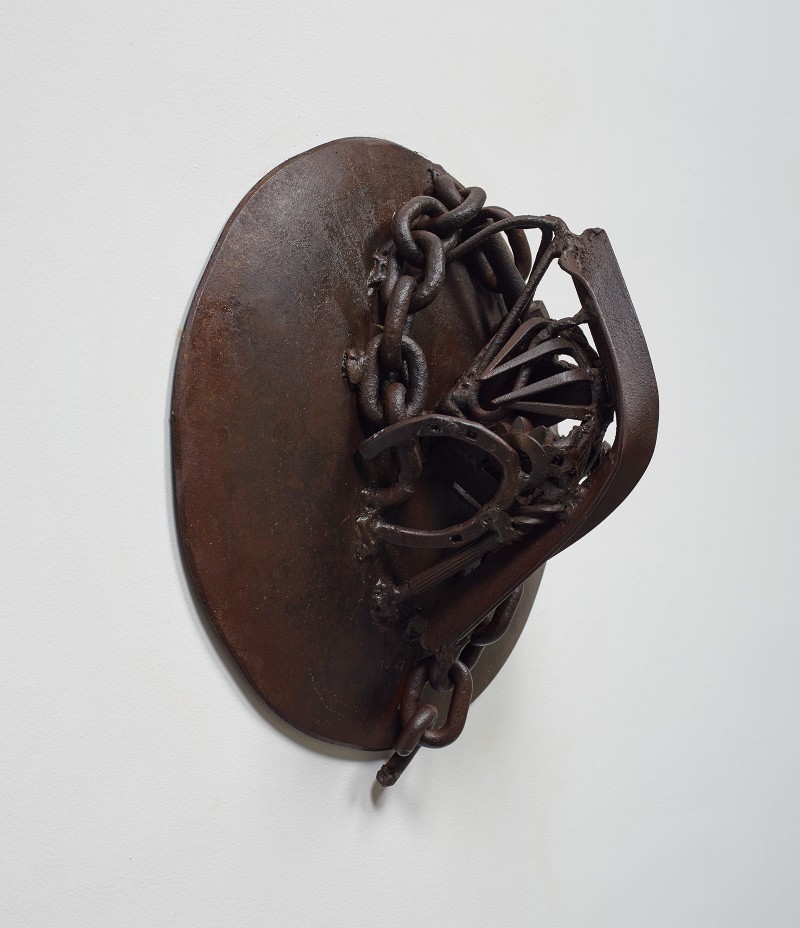
The “Lynch Fragments” hang at the artist’s eye level. They confront the viewer. Their height and size inevitably evoke masks, despite the fact that only a few offer either the bilateral symmetry of a face or details that might represent eyes, nose, or mouth. Their height also means that any viewer of vaguely the artist’s stature cannot avoid both looking them in the eye, and the sense that these steel constructions might respond in some way.
Larger welded steel sculptures
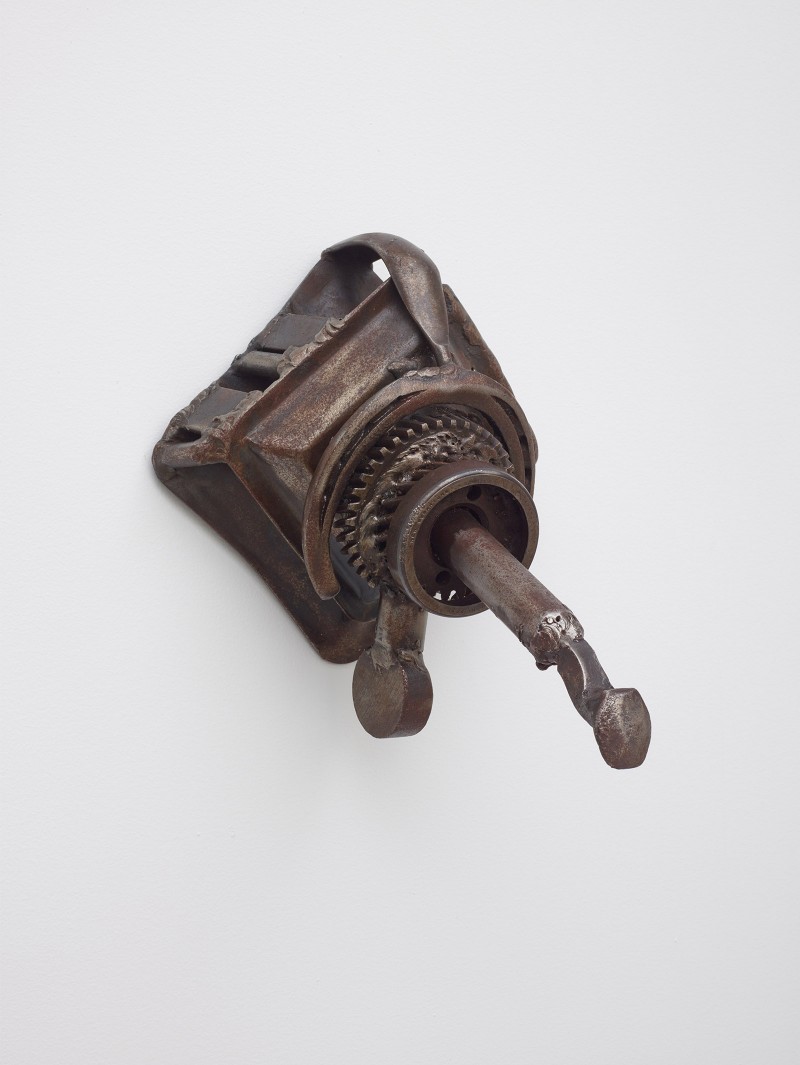
Sculpture is traditionally an art of mass, which implies stasis, yet Edwards has created a sculpture of tension. Traditional sculpture transforms materials into an artistic whole more solid than its parts, whereas the “Lynch Fragments” always carry the potential to break apart, their fused chains, spikes, pipes, nails, gears, blades, hammers, chisels, and scissors—tools of trades, industry, and agriculture—returning to individual chunks of steel with potential for violence as well as for construction and cultivation. If traditional sculpture transforms base materials from the everyday world into the sphere of art, these gather strength from their mundane functions—as does Edwards’ method. The artist said, “Once I started to weld steel, I realized how much of the world I live in is welded.”
The exhibition includes work beyond Lynch Fragments: drawings, maquettes, larger welded steel sculpture, a number of barbed-wire pieces and a photographic catalog of the 19 public art commissions that Edwards has produced since 1969. The latter are mostly in stainless steel with worked surfaces, and hence have a common appearance that distinguishes them from the work created for indoors.
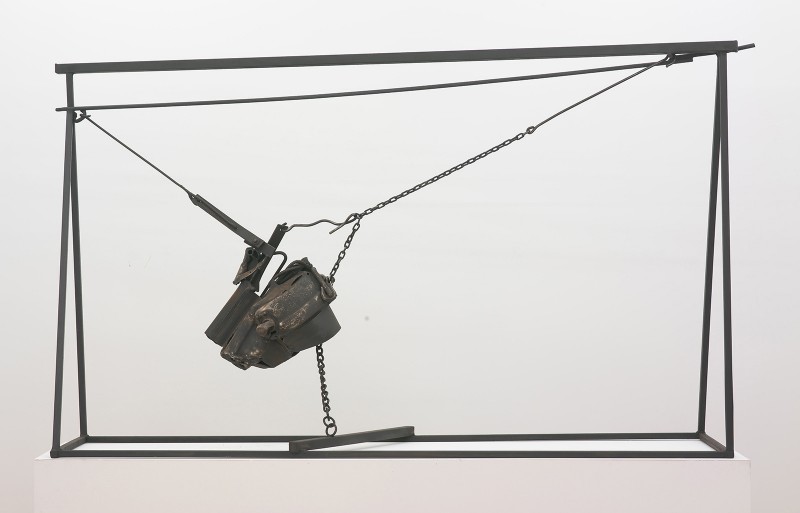
“Chaino” (1964) is the most powerful of the large, welded steel sculptures—clearly a museum piece, and I’m happy to learn that since I last saw it, at the Brooklyn Museum of Art, it has been acquired by the Williams College Museum of Art. An assembled, densely-massed form is suspended from a steel frame, held in place by three chains and rods that pull in opposing directions. The work evokes a body that is bound and quartered, despite the fact that nothing about its form actually resembles a living being. It exemplifies Edwards’ ability to infuse the steel with implied life and action.
Chilling barbed wire pieces
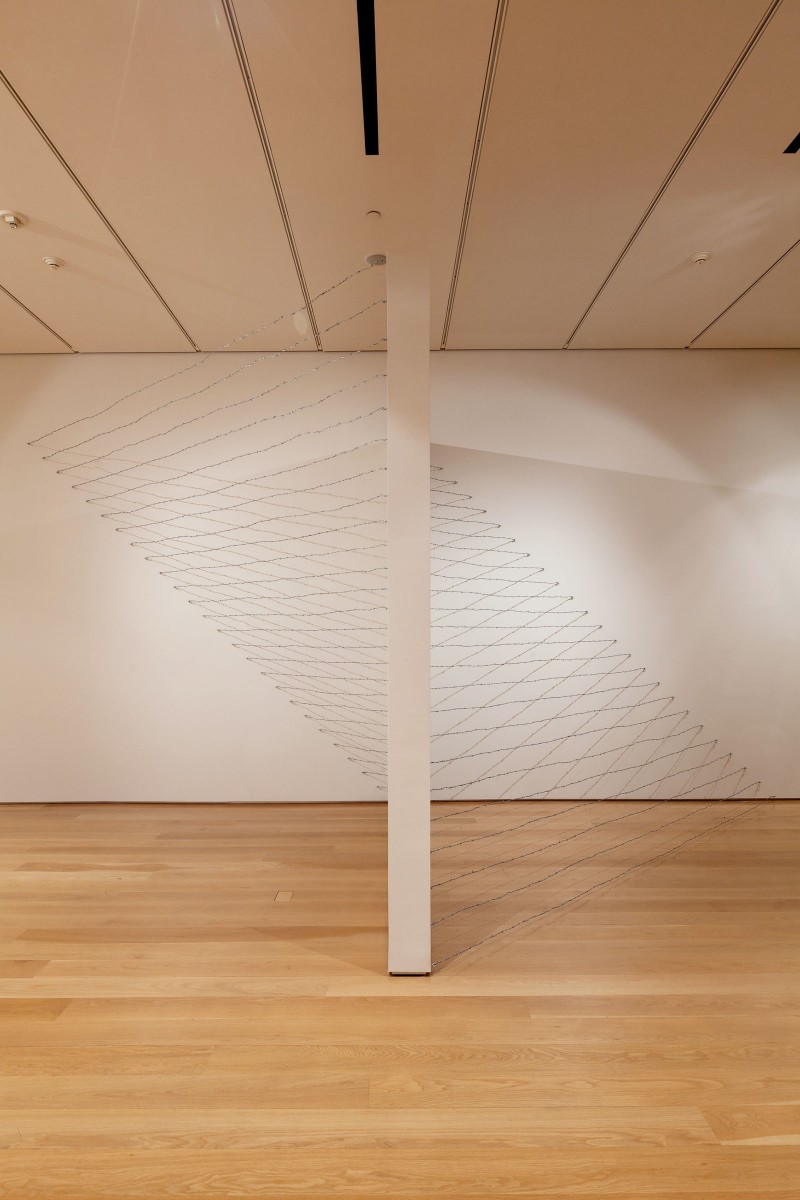
Equally disturbing are four pieces which Edwards installed as a solo exhibition at the Whitney Museum of Art in 1970 and has recreated for the exhibition. All employed multiple lengths of barbed wire, which the artist hung from walls and ceiling so they outlined forms in space. One cuts off a corner, creating a downward-facing pyramid; on the opposite side of the wall, another forms a pyramid facing upwards. A hammock-like form is suspended from the ceiling, and a hanging wall of barbed wire has a border of looped steel chain. What resemble scratchy, ink-drawn lines at a distance become instruments of control when seen at close range, where barbed wire’s function is clearly to keep bodies in, or out. And the heavy chain, in this context, is inevitably associated with its use to restrict animals or people. Edwards’ use of modest materials and ephemeral form here is very close to contemporaneous work by Eva Hesse, Barry Le Va, Robert Morris, Alan Saret, Richard Serra, Robert Smithson and others; but his content differs. Their inexpensive, everyday goods—fabric, string, chicken wire, mesh, rubber, sheet glass, salt, and dirt—did not have the inherent menace or historical associations of Edwards’ barbed wire.
Edwards’ art is exemplary in its ability to raise political topics without becoming polemical, to renew a long sculptural tradition, and to invest everyday materials with potent significance. Once again, our major museums have missed out.
The exhibition is accompanied by a handsome catalogue that includes an interview with the artist, an overview of his career by curator, Catherine Craft, an essay by Alex Potts analyzing Edwards’ work in terms of process and politics, the history of 20th-century sculpture and African metalworking, and another by Tobias Wofford, situating Edwards within the international, African diasporic community. It also includes a catalogue of his public sculpture by Leigh A. Arnold.
Susan E. Cahan, Mounting Frustration: The Art Museum in the Age of Black Power
(Duke University Press, Durham: 2016) ISBN 978-0-8223-5897-8
Mel Edwards’ 1970 exhibition at the Whitney Museum is one manifestation of the confrontations Susan Cahan reveals in her fascinating monograph. Her carefully researched study documents a largely unknown chapter in the history of New York’s most prominent art museums and sets it within a broader account of the museums’ histories, social history, and evolving civil rights activities. She recounts fights over the inclusion of artists of color in collections and exhibitions and the paucity of African-American curatorial staff at the Metropolitan Museum of Art (MMA, the Met), the Museum of Modern Art (MoMA), and the Whitney Museum of American Art (Whitney).
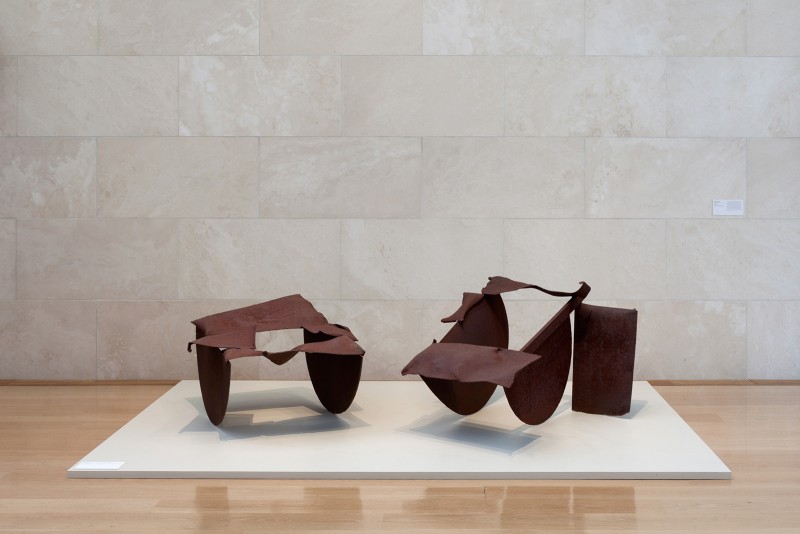
While the angry response of the black community to the Met’s “Harlem on My Mind” exhibition of 1969 is well-known, the picketing and subsequent negotiations with the Whitney, which followed, are rarely mentioned. And while many criticisms of MoMA’s Primitivism in 20th-Century Art: Affinity of the Tribal and the Modern have been well-publicized, the history of MoMA’s exhibition memorializing Dr. Martin Luther King, Jr. in 1968 and the reaction it provoked from the black community is likewise obscure.
Mounting Frustration includes detailed stories, naming and citing the participants, in this exemplary period when the art world and politics intersected, with activist artists working to create real, political change within their own, professional sphere. As an interesting coda, in 1989, when the Whitney presented The New Sculpture 1965-75, with work by Eva Hesse, Barry Le Va, Robert Smithson, et al, the barbed-wire works that Mel Edwards had exhibited in 1970 were nowhere in evidence. If the black community’s long-term success at inclusion in mainstream art museums has been incomplete, it only confirms the insincerity and intransigence of the institutions.




